Exceptional works by Japanese master offered at Bonhams
Shibata Zeshin (柴田是真 (1807–1891). A tiger from an album of 18 urushi-e (lacquer) paintings. Estimate £15,000 - 20,000. Photo: Bonhams.
LONDON.- Bonhams will hold the second of a series of sales from the Misumi Collection of Important Works of Lacquer Art and Paintings on Tuesday 10 November at its New Bond Street headquarters in London.
Last year’s white-glove sale of the first part of the collection achieved a total of £1,424,500, over four times the pre-sale estimate.
A selection of masterpieces by Shibata Zeshin – such as the depiction of a tiger from an album of 18 urushi-e (lacquer) paintings (above, estimate £15,000 - 20,000) will be offered as part of the forthcoming sale.
Shibata Zeshin (柴田是真 (1807–1891), album of 18 urushi-e (lacquer paintings) 漆絵画帳, Meiji era (1868–1912), circa 1881. Estimate £15,000 - 20,000 (€20,000 - 27,000). Photo Bonhams.
An album of 18 urushi-e paintings in an album bound inorihon (concertina) style, the cover of silk brocade with woven with roundels depicting fabulous beasts and birds, the two endpapers painted in urushi-e withchidori, bamboo grass, and waves on a gold-splashed background, the paintings as follows:
1) A branch of plum against a red sky, painted on a fan leaf
2) The famous two rocks at Futamigaura, a place visited by Zeshin in 1875 and frequently painted by him thereafter (see Earle 1996, p. 46, Gōke 1981, p. 187, reproducing a sketch of the rocks, and Shioda 1908, unpaginated, a painting of the same subject)
3) A waterfall, pine, and sheer cliff; for another example of this subject, one of Zeshin's urushi-e album favourites, see for example Gōke 1981, pl. no. 176, in an album dated to 1882.
4) Clams and seaweed
5) A collection of curious rocks
6) A ferocious tiger pursuing fleeing its long-tailed prey over the edge of a precipice; for a similar treatment of this subject compare Yasumura 2009, cat. no. J-21.1, an album leaf also dated to 1881.
7) An anchor and sea gulls by the shore; for another depiction of an anchor in a lacquer album painting see Earle 1996, cat. no. 76.15
8) Bullrushes, rocks, and a water-fowl
9) Sailing boats by a pine-clad hill
10) An enju (pagoda tree, Styphnolobium japonicum) and bird
11) A bear and two sawagani (freshwater crabs,Geothelphusa dehaani)
12) A herdboy and ox
13) Grapes hanging from a branch of vine
14) A large carp and two smaller carp swimming by weeds
15) A bird sitting on a bamboo water conduit from which water splashes onto a rock
16) A mouse peeping out from a hole in a damaged plaster wall
17) A kakashi (scarecrow) in the form of an archer in a field of rice with five dragonflies, two of them resting on the arrow
18) Mount Fuji with two pines
The first painting signed Gyōnen shichijūgo-sō Zeshin 行年七十五叟 是真 (Zeshin, aged 75) with seal Shin 真; the other paintings each signed Zeshin 是真 and variously sealed Shin 真, Zeshin 是真, Ze 是, Koma 古満, etc.
The cover inscribed in black lacquer on a gold-paper slipUrushi-e chō 漆画帳 (Album of urushi-e)
Overall: 10.6 × 13.2 × 2 cm (4 1/8 × 5¼ × ¾ in.)
Each painting: 8.6 × 11 cm (3 3/8 × 4 3/8 in.)
Fitted wood storage box (2)
Provenance: Sotheby's London, 9 May 1973, lot no. 202
Christie's New York, 29 March 2005, lot no. 239
Exhibited and Published: Nezu Bijutsukan 2012, cat. no. 113
Shibata Zeshin
The lacquer artist Shibata Zeshin (1807-1891) was one of the most famous names of the late Edo and Meiji Era art world. He began his prolific and versatile career at 11-years old as an apprentice, but rapidly gained a reputation for the naturalistic style of painting that came into vogue with the arrival of European traders.
Zeshin lived in turbulent times. In 1867-8 the centuries-old government of the shoguns was swept away by a coalition of reformist samurai, and the youthful Emperor was installed as a European-style constitutional monarch ruling from Zeshin’s native city, which was renamed Tokyo. Japan’s new-found globalism was an inspiration to Zeshin, whose exposure to the formats and techniques of western art in the early years of the Meiji Era (1868-1912) had revolutionary artistic results, which are readily apparent in the works of the Misumi Collection. One of them was his development of urushi-e, paintings of wet lacquer applied to paper. This daring new method, so different from traditional maki-e (lacquer sprinkled with gold or silver powder as a decoration) was clearly intended to emulate oil painting on canvas.
It is at this time that Zeshin must have first seen framed oil paintings and was inspired to create a series of large scale lacquer panels with bold, unified compositions and lavish use of the many new maki-e techniques that he had invented over the decades. His first panel, a landscape of Mount Fuji, was exhibited at the Vienna World Exposition of 1873, a potent symbol of Japan’s determination to blend the traditional and the foreign and forge a new artistic identity. The cover lot for this year’s sale, a paulownia-wood door panel featuring an autumn maple-viewing scene (estimate £100,000-150,000), exemplifies this revolutionary development.
Shibata Zeshin 柴田是真 (1807–1891) Door with autumn maple-viewing scene 紅葉狩図蒔絵板戸, Meiji era (1868–1912), late 1880s. Estimate £100,000 - 150,000 (€130,000 - 200,000). Photo: Bonhams
A paulownia-wood door panel, decorated in high-relief gold, silver, red, brown, and black takamaki-e, some areas highly polished and others heavily textured, depicting a silver tea kettle suspended from a natural branch laid on two rocks over a fire, pine needles and curling maple leaves lying nearby; the reverse painted in ink and silver paint with a sparrow flying above a stylized stream with sprigs of seri (Japanese parsley). Signed in subori on the right, at the base of the rock,Zeshin 是真 with a kaō in the form of the character kin 巾 - 59.3 × 39 cm (23 3/8 × 15 3/8 in.). Modern cloth-bound outer storage box (2)
Exhibited and Published: Nezu Bijutsukan 2012, cat. no.47
Notes: In his catalogue note for the 2012 Zeshin exhibition at the Nezu Museum, Takao Yō comments that the technique and design of this door, is closely related to a much-praised maki-e panel depicting a mushroom-gathering scene submitted by Zeshin to the first Naikoku Kangyō Hakurankai (National Industrial Exhibition), held in 1877. In combination with mushroom-gathering scenes of the kind seen in lot no. 9, designs based on the autumn custom of maple-viewing were one of Zeshin's favourite themes during the final fifteen years of his long career. Here he uses the range of special finishes he had perfected during the preceding decades to produce a exceptionally deep three-dimensional effect; similarly rough, rich textures, likely emulations of Western oil painting, are also seen, for example, on the rocks in Zeshin's panels of crayfish, exhibited in 1888, 1889, and 1890 (Gōke 1981, pl. no. 3). Parts of the fireplace are executed using a carving technique also seen in Zeshin's inrō made to resemble ancient sticks of ink (see, for example, Nezu 2012, cat. nos. 9396).
A closely related maki-e panel of this subject by Keishin, in the collection of Zeshin's eldest son Reisai (18501915), was reproduced in a biography of Zeshin published in Kenchiku kōgei sōshi in June 1916 (Suzuki 1916).
For other examples of Zeshin's ink-and-colour painting (as opposed to maki-e) on sugi, seen on the reverse of this door, see lot no. 4 in the present catalogue and Gōke 1981, pl. nos. 211218.
The kaō Zeshin added after his signature on this piece, in the form of the character kin 巾, is seen on works dating from 1879 onwards (for other examples, see Earle 1996, p. 30, [h]).
The leaders of the new government quickly recognized the soft-power potential of Japan’s traditional arts and crafts and frequently commissioned Zeshin to execute commissions for international exhibitions and the imperial palaces; in the year he died he was even named one of the first Teishitsu Gigeiin (Artist to the Imperial Household, a forerunner of today’s Living National Treasure).
While Zeshin was revered in his home country during his lifetime, in death, his fame was diminished by the tumultuous events of Japan’s break-neck modernisation. Fortunately his work never fell from favour with the American and European collectors whose fascination with him dates back to those first international expositions. It is mostly thanks to this foreign enthusiasm that Zeshin’s stock has now risen so dramatically in his own land.
Suzannah Yip, Bonhams Director of Japanese Art, comments: "We are honoured to have been entrusted with the dispersal of this remarkable collection of lacquer and painting by an artist whose work is so admired both inside and outside Japan. Last year’s sale of part one of the Misumi Collection was the undisputed highlight of ‘Asian Art Week in London’ and the upcoming auction underscores yet again Bonhams status as the leading global auction house for truly important Japanese art”.
Shibata Zeshin 柴田是真 (1807–1891), Small box with autumn grasses 秋草図素彫小箱, Meiji era (1868–1912), circa 1870–1890. Estimate £100,000 - 150,000 (€130,000 - 200,000). Photo: Bonhams.
A small box with kabusebuta (overhanging lid), the body, with rounded edges, likely constructed using a combination of the magemono (bentwood) and harinuki(layered-paper) techniques, the reddish-brown lacquer ground cut and engraved in subori with a design ofsusuki and fujibakama plants. Signed in subori inside the lid at lower left Zeshin 是真 - 3.9 × 8.5 × 7.4 cm (1½ × 3 3/8 × 2 7/8 in.). Fitted clear-lacquered wooden tomobako storage box inscribed Zeshin saku akikusa-bako 是真作 秋草箱 (Box with autumn plants by Zeshin) and paper label from the Zeshin Hyakunijūnen Tsuizen Kinen Tenkan 是真百廿年追善記念展観 (Zeshin 120th Anniversary Display), held in Tokyo in 2011 (4)
Exhibited and Published: Zeshin Hyakunijūnen Tsuizen Tenkan, 2011
Nezu Bijutsukan 2012, cat. no. 56
Notes: In his catalogue note for the 2012 Zeshin exhibition at the Nezu Museum, Takao Yō comments that Zeshin used a single marukebori (curved line-engraving) knife to execute this delicate composition; further information on the subject of the subori technique of carving can be found in Takao 2011b as well as in the Foreword to this catalogue.
For a somewhat larger box by Zeshin with a related autumnal design in different techniques, see Earle 1996, cat. no. 21
Shibata Zeshin 柴田是真 (1807–1891) Urushi-e (lacquer painting) of mushroom-gathering in autumn fields 秋色野辺茸図漆絵掛軸, Meiji era (1868–1912), circa 1884. Estimate £50,000 - 80,000 (€67,000 - 110,000). Photo: Bonhams.
An urushi-e mounted as a hanging scroll, depicting two branches of maple on which hangs a slender twig threaded with three varieties of mushroom, a silver tea kettle suspended by a cord from the lower branch over a fire of twigs laid in the hollow of a rock, smoke rising from the fire, curling maple and other leaves, and pine needles, the painting executed in a wide range ofurushi-e and maki-e colours and finishes, the rocks richly textured. Signed in black urushi-e at lower right Gyōnen shichijūhachi-ō Tairyūkyo Zeshin 行年七十八翁 對柳居是真 (Tairyūkyo Zeshin, aged 78) with seal Koma 古満 - Overall: 176 × 42 cm (69¼ × 16½ in.) - Image: 81 × 27 cm (31 7/8 × 10 5/8 in.)
Fitted wooden tomobako storage box inscribed outsideZeshin-ō kōyō no kinokogari urushi-e tatefuku 是真翁紅葉之茸狩 漆絵立幅 (A vertical hanging scroll urushi-epainting of mushroom-gathering in autumn, by the venerable Zeshin) and inscribed inside the lid Urushi-e tatefuku mezurashiku maki-e gihō moromoro ni mochii kasaku Yoshiie Suisekitei denrai shinseki sōinaki mono nari hachijūkyū-ō Shōji Hōshin kanshiki 漆絵立幅珍らしく蒔絵技法諸々に用ひ佳作 吉家水石亭伝来 真蹟相違なき者也 八十九翁庄司芳真鑒識 (Vertical hanging scrollurushi-e painting, a masterpiece executed using variousmaki-e techniques, handed down in the Yoshiie Suisekitei family, beyond question an authentic work, examined and inscribed by Hōshin, aged 89) with sealsKoma 古満 and Hōshin 芳真; fitted outer storage box (3)
Provenance: Yoshiie Family, Suisekitei Collection
吉家家(水石亭)旧藏
Exhibited and Published: Nezu Bijutsukan 2012, cat. no.125
Notes: The present lot, clearly closely related to the door with a tea kettle (lot no. 7), is believed to be the Zeshin's only large-scale urushi-e depiction of this subject.
For other works by Zeshin from the Yoshiie Collection, see lot no. 3.
Shibata Zeshin 柴田是真 (1807–1891), Inrō with antiques mirrors 古鏡図蒔絵印籠, Meiji era (1868–1912), circa 1870–1890. Estimate £40,000 - 60,000 (€53,000 - 80,000). Photo: Bonhams.
An inrō with four interlocking cases and cover, of standard lenticular cross-section with straight sides, rounded corners, curved top and base, and integrated cord-runners, the roiro lacquer ground decorated in black maki-e with a continuous ground of ken-katabami mon (heraldic crests of swordblades combined with flowers of wood sorrel, Oxalis corniculata), an antique mirror on each side executed in takamaki-e of chadō-nuri, one of the mirrors eight-lobed with a dragon design, its carrying cord in red lacquer extending to the other side and terminating in a tassel, the other nine-lobed with a design of two phoenixes alternating with paulownia crests, the compartments and risers goldnashiji, the shoulders and rims brightish gold fundame; carnelian ojime; lacquered wood manjū netsuke decorated in gold, silver, and red hiramaki-e with two phoenixes. Signed in subori to the left of the handle of the smaller mirror Zeshin 是真 - Inrō: 7.6 × 4.8 × 1.6 cm (3 × 1 7/8 × 5/8 in.) - Netsuke: 3.5 × 2 cm (1 3/8 × ¾ in.).
Fitted wooden storage box (2)
Exhibited and Published: Nezu Bijutsukan 2012, cat. no. 94
Notes: In 1875, Zeshin paid a visit to Nara where he was able to examine items stored in the Shōsōin, the eighth-century imperial treasure house in the precincts of the Tōdaiji Temple (Earle 1996, p. 46, quoting Umezawa Ryūshin's 1927 biography of Zeshin). Objects from the Shōsōin, until then virtually inaccessible to anyone outside the imperial court, subsequently played an increasing influential role in Japanese art from early in the Meiji era. Zeshin was no exception to this trend and it is likely that the mirrors depicted on this inrō were loosely modelled on originals stored in the Shōsōin, either Chinese Tang-dynasty examples or Japanese copies of around the same date. He lavished typically meticulous craftsmanship both on the mirrors and on the dense background pattern of mon (crests). Takao Yō notes that although chadō-nuri, used here for the mirrors, is listed as a separate technique in Sawaguchi Goichi's monumental study of Japanese lacquer, Nihon shikkō no kenkyū (1933), in Zeshin's time it would simply have been regarded as a variant of seidō-nuri. Chadō-nuri differs from seidō-nuri in that it contains bengara (red iron oxide) in addition to orpiment (arsenic sulphide), producing an effect that, as Takao comments, is ideally suited to emulating the surface of antique bronze (Takao 2011a, figs. 14, 15).
Shibata Zeshin 柴田是真 (1807–1891), Inrō with mouse 二十日鼠図蒔絵印籠, Meiji era (1868–1912), circa 1870–1890. Estimate £30,000 - 35,000 (€40,000 - 47,000). Photo: Bonhams.
An inrō with three interlocking cases and cover, of standard lenticular cross-section with straight sides, rounded corners, curved top and base, and integrated cord-runners, the body cut from a single block oftagayasan (kassod tree, Senna siamea), decorated on the cover and top with a house mouse in hiramaki-e andtakamaki-e of brownish-black lacquer with a minute admixture of orpiment (arsenic sulphide), the fur and whiskers very finely rendered in tsukegaki (fine maki-elines drawn on top of an existing maki-e ground); on the reverse the mouse's footprints in hiramaki-e; the interior fittings also of tagayasan; copper ojime with wirework decoration; boxwood manjū netsuke carved as a closed 16-petal chrysanthemum blossom and encrusted in shell and lacquer with a ladybird and chrysanthemum leaves and blossom, the himotōshi formed by the chrysanthemum stalk. Signed in gold hiramaki-e on the base Zeshin 是真 - Inrō: 8.5 × 5.4 × 1.7 cm (3 3/8 × 2 × 5/8 in.) - Netsuke: 4.3 × 1.6 cm (1¾ × 2 × 5/8 in.). Fitted wooden storage box (2)
Provenance: Raymond Bushell Collection, purchased at Sotheby's London, 18 June 1997, lot no. 79
Exhibited and Published: Bushell 1979, pp. 112–3, no. 77
Nezu Bijutsukan 2012, cat. no. 90
Notes: In his catalogue note for the 2012 Zeshin exhibition at the Nezu Museum, Takao Yō notes that an inrō with this design, but on a roiro ground and with the footprints carved in subori, remained in Zeshin's Tairyūkyo residence after his death; an original drawing for an inrō with the same motif is reproduced in Shikki zuroku, a collection of lacquer designs originally compiled by Zeshin's eldest son Reisai (18501915) and re-published posthumously in 1916 (see Nihon Shikkō Kai 1896, vol. 6 and Gōke 1981, supplementary volume, fig. no. 298).
For alternative treatments of this favourite subject of Zeshin's, see Herberts 1962, pp. 1545, an inrō with shibuichi-nuriground and a mouse in black lacquer, and Lewis and Earle 1996, p. 164, cat. no. 72, another inrō, featuring bursting pods of tōgarashi (red pepper) on the reverse.
A leguminous tree native to South-East Asia, from the medieval period onwards the tagayasan was prized in Japan for its fine-grained, durable timber.
Shibata Zeshin 柴田是真 (1807–1891) 12 tanzaku paintings of the 12 months 十二ヶ月短冊揃, Meiji era (1868–1912), circa 1884. Estimate £20,000 - 30,000 (€27,000 - 40,000). Photo: Bonhams.
A set of 12 tanzaku (tall vertical poem-cards) with gold-painted edges, the reverses with flecks of gold, the cards painted in ink and colours as follows:
First Month
An itomari or temari (silk thread ball) and hane(shuttlecock). Itomari or temari and hane were a favourite children's gift at New Year. For a different version of this tanzaku subject also from the Misumi Collection, see our catalogue The Misumi Collection: Important Works of Lacquer Art and Painting: Part 1, 5 November 2014, lot no. 8.
Second Month
A banner inscribed Shōichi-i Inari Daimyō[jin] 正一位稲荷大明[神] (Top-Ranking Great Deity Inari), partially obscured by a branch of flowering plum. The Inari Festival was held on the first horse day of the second month and Zeshin used this motif again, not only in a closely related set of tanzaku in the Khalili Collection discussed below but also in the second-month inrō from the celebrated set of 12 in the Victoria and Albert Museum (inv. no. W.302-1922).
Third Month
Tsukushi (horsetail, Equisetum arvense), rushes, and cherry-blossom petals
Fourth Month
The head of one and the tail of another swimmingkatsuo (bonito, Katsuwonus pelamis). The hatsu-gatsuo(first bonito of the season) is a classic early-summer delicacy.
Fifth Month
A toy sword in a fur scabbard, symbolizing the Boys' Festival held on the fifth day; for an example of a toy sword on a lacquer box in the Khalili Collection, see Earle 1996, cat. no. 4.
Sixth Month
Pilgrims climbing Mount Fuji. This month marks theyamabiraki (opening of the mountain-climbing season) and Zeshin used the same motif on the related Khalili Collection set of tanzaku (see below). He climbed on Mount Fuji himself in 1872.
Seventh Month
Tanzaku (poem cards) hanging from a bamboo plant; they stand for the Tanabata Star Festival held on the seventh day to mark the one time of the year when the Herd Boy (Altair) and the Weaver Girl (Vega), separated on either side of the Milky Way as a punishment for neglecting their duties, are allowed to meet.
Eighth Month
Full moon, mochi (rice cakes) on a stand, with susuki, and kikyō. Rice cakes, shaped like the full moon, are the time-honoured accompaniment to the eight-month custom of moon viewing, while susuki and kikyō are numbered among the canonical aki no nanakusa (seven autumn plants).
Ninth Month
A kuri (sweet chestnut, Castanea crenata) emerging from its spiny burr, with branch and leaves.
Tenth Month
A bamboo fishing rod and float. The tenth month in the lunar calendar was also known as Kaminazuki (Godless Month) because all Japan's deities were summoned to the Grand Shrine at Izumo, with the exception of Ebisu, one of the Seven Gods of Good Fortune and a guardian deity of fishermen.
Eleventh Month
A kumade (bamboo rake) with a mask of Ofuku and a label inscribed omamori 御守. Since the Edo period, the Tori-no-Ichi fair has been held in Tokyo's Asakusa district on a tori (rooster) day in the eleventh month. Revellers bring their old kumade charms decorated with masks of Ofuku, Goddess of Mirth, and exchange them for new ones which they take home and use to symbolically 'rake in' wealth and good fortune.
Twelfth Month
A small bird perched on a bamboo snow-shovel.
Sugi-wood (Japanese cypress, Cryptomeria japonica) fitted storage box covered in brownish transparent lacquer and decorated in gold, silver, and colouredtakamaki-e, shell, and lead with vine tendrils and leaves. Each tanzaku signed Zeshin 是真 with seal Reisai 令哉. The box: 38.7 × 8.7 × 3 cm (15¼ × 3 3/8 × 1 1/8 in.) - Each tanzaku: 36.2 × 5.9 cm (14¼ × 2 3/8 in.). With red paper authentication slip inscribed Zeshin-ō hitsu jūnikagetsu tanzaku mizunoto-tori shunjitsu Kakan'an Chikushin kan 是真翁筆十二ヶ月短冊 癸酉春日可寛菴竹真鑒 (Tanzaku of the twelve months, brushed by the venerable Zeshin, examined by Kakan'an Chikushin on a spring day in the mizunoto-tori year [=1933]) (14)
Notes: A very similar set to the present lot, with identical dimensions and many of the same subjects, is in the Khalili Collection; the tanzaku for the twelfth month gives Zeshin's age as 78, suggesting a date of 1884. Like the present lot, the Khalili set was authenticated by Chikushin (Earle 1996, cat. no. 100). For Chikushin, see lot no. 11.
Shibata Zeshin 柴田是真 (1807–1891), Tobacco tray with bird-shaped kite 凧図蒔絵煙草盆, Meiji era (1868-1912), circa 1870–1890. Estimate £20,000 - 30,000 (€27,000 - 40,000). Photo: Bonhams.
A deep tray with curved corners, the slightly recessed interior with indented corners, the wood body entirely covered in almost black chadō-nuri with ishime-nuritexture, the interior decorated in highly polished low black takamaki-e with a kite in the form of a crow viewed from below and upside-down (as indicated by the location of the signature on the base), details of the feet and eyes in silver lacquer, the kite string and its ties depicted in gold hiramaki-e partly incised in suboritechnique to indicate the individual twisted threads, the string extending over the top side and the base to the long-handled itomaki (winder) depicted on the side, its wood and bamboo components rendered in takamaki-eof gold, shibuichi, and shakudō powder incised in suboritechnique with wood grain. Signed in gold hiramaki-e on the base at lower leftZeshin 是真 - 4.5 × 28.5 × 22.9 cm (1¾ × 11¼ × 9 in.). Wooden storage box with label inscribed Tako maki-e tabako-bon Zeshin saku 凧蒔絵煙艸盆 是真作 (Maki-etobacco tray by Zeshin) and letter of authentication from Shōji Hōshin (1898–1993), reading Zeshin-ō saku tako maki-e seidōji tabako-bon shinsaku mugi mono nari Shōwa gojūkyūnen uzuki hachijūroku-ō Hōshin kan 是真翁作 凧蒔絵青銅地煙艸盆 真作無疑者也 昭和五十九年卯月 八十六翁 芳真鑒 (Seidō-ground tobacco tray by Zeshin, authentic work examined by Hōshin, aged 86, April 1984) with seals Shōji 庄司 and Koma 古満; wrapper sealed Hōshin no in 芳真之印 (Seal of Hōshin) (3)
Provenance: Yoshiie Family, Suisekitei Collection
吉家家(水石亭)旧藏
Exhibited and Published: Nezu Bijutsukan 2012, cat. no. 18
Notes: In his catalogue note for the 2012 Zeshin exhibition at the Nezu Museum, Takao Yō comments that the kite depicted here is no ordinary toy but a special variety that was probably, and typically, Zeshin's own invention.
The Yoshiie family referred to in the certificate lived in Tokyo and were owners of a panel depicting a harvest festival, completed in 1882, that is one of the finest works in the Khalili Collection; they also owned a tiered box and another panel in the Khalili Collection (Earle 1996, cat. nos. 23, 27, 29), as well as lot no. 9 in the present catalogue.
Shibata Zeshin 柴田是真 (1807–1891), Two fan-shaped urushi-e (lacquer paintings) of butterflies and moths 群蝶繭蛾図扇面漆絵, Meiji era (1868–1912), circa 1875–1890. Estimate £10,000 - 15,000 (€13,000 - 20,000). Photo: Bonhams.
Two urushi-e fan paintings mounted as a hanging scroll, the upper painting depicting a moth which has just emerged from its cocoon and six further cocoons all depicted in fine ink drawing, the twisted straw wrappings in urushi-e, the lower painting with five butterflies. Overall: 137.2 × 57 cm (54 × 22½ in.) - Each fan: 16.3 × 44.2 cm (6 3/8 × 17 3/8 in.). Each signed Zeshin 是真 with seal Shin 真
Fitted wooden tomobako storage box inscribed outsideZeshin-ō hitsu urushi-e gunchō mayu ga senmen fuku 是真翁筆漆繪群蝶繭蛾扇面幅 (Urushi-e scroll of butterflies, cocoons, and moths by the venerable Zeshin) and inscribed inside the lid Kakan'an Chikushin kan narabi ni dai 可寛菴竹真鑒並題 (Examined and inscribed by Kakan'an Chikushin) with seal partially readingChikushin 竹真; letter of authentication from Shōji Chikushin addressed to a Mr Nagashima dated Showa 8 (1933), September; fitted outer storage box (4)
Notes: Shōji Chikushin (18541936), whose gō or art name was Kakan'an, was a leading pupil of Zeshin who often signed boxes authenticating his work.
Shibata Zeshin 柴田是真 (1807–1891), Sweet dish imitating pewter 砂張盆写菓子器, Edo period (1615–1868), circa 1855. Estimate £10,000 - 15,000 (€13,000 - 20,000). Photo: Bonhams.
A roughly circular dish modelled in imitation of a hammered-pewter platter, the thin paper body lacquered in a mixture of charcoal powder, orpiment (arsenic sulphide), bengara (red iron oxide), and powdered tin, the somewhat uneven rim relieved by pairs of small incisions at irregular intervals, the reverse of the rim with shallow scalloped decoration, the base with a nest of concentric squares. Signed in subori on the base Zeshin 是真 - 20.4–20.8 cm (8–8¼ in.) diameter. Fitted wooden tomobako storage box inscribed, probably by Zeshin himself, Seikaibon utsushi 青海盆ウツシ (Copy of a seikai tray), and with two Japanese auction slips (4)
Notes: A very similar dish, shown in the 2012 exhibition at the Nezu Museum and dated to 1855, was accompanied by a fitted wooden tomobako box inscribed by Zeshin to the effect that it was a 'copy of a sahari tray', alluding to the historic metal alloy of that name, akin to Western pewter, made from copper, lead, and tin (Nezu Bijutsukan 2012, cat. no. 63). Microscopic examination of the present dish, carried out by lacquer historian Takao Yō, has revealed the mix of powders in sahari-nuri to lie somewhere between those used for seidō-nuri (imitating bronze) and those used for shibuichi-nuri (imitatingshibuichi); Takao speculates that the preparation of the paper base and the application of the undercoats played an even more important part than the final maki-e in achieving the look of sahari.
As well as reproducing the mottled, subdued colours and somewhat irregular oxidized surface characteristic of earlier metal prototypes, Zeshin mimicks the chiselled marks seen on metal dishes used in the tea ceremony, themselves close copies of pewter dishes brought to Japan by European sailors from the sixteenth century. The title inscribed on the storage box accompanying this example, 'Copy of a seikai (literally, "blue sea") tray', may be an allusion to this exotic origin. In addition to the example in the Nezu Museum mentioned above, there is a sahari-nuri dish in the Edson Collection (see Izzard 2007, cat. no. 29 and Yasumura 2009, cat. no. E-16), and about another four examples are known (Takao 2011a, p. 13, figs. 22, 23).
Zeshin's ingenuity in this medium was admired in the West even during his lifetime, the British commentator Ernest Hart noting in 1886 that he had 'with infinite cunning, imitated the colour and patina of old bronze' (Hart 1887, p. 23); his success in creating sahari-nuriwas also noted in a posthumous imperial eulogy (Earle 1996, p. 50). Not content simply with making dishes in imitation of pewter, Zeshin sometimes illustrated them in his urushi-e paintings: for an example from the Misumi Collection, see our catalogue The Misumi Collection: Important Works of Lacquer Art and Painting: Part 1, 5 November 2014, lot no. 11.
Shibata Zeshin 柴田是真 (1807–1891) , Inrō with the oni-yarai rite 鬼遣図木地蒔絵印籠, Meiji era (1868–1912), circa 1870–1890. Estimate £8,000 - 10,000 (€11,000 - 13,000). Photo: Bonhams
An inrō with three interlocking cases and cover, of standard lenticular cross-section with straight sides, rounded corners, very slightly curved top and base, and applied cord-runners, the body cut from a solid block ofsugi (Japanese cypress, Cryptomeria japonica), painted in mineral pigments and gold with an oni holding the large Chinese-style hat normally worn by Shōki the Demon-Queller to protect himself as he flees from peas thrown at him during the custom of oni-yarai (see below), his trailing scarf continuing on the reverse, the interior fittings also of sugi; wood ojime in the form of two masks; wood netsuke in the form of one large and six smaller masks. Signed in black lacquer at the right-hand side of the reverse Zeshin 是真, with a red seal - Inrō: 8.9 × 5.4 × 2.2 cm (3½ × 2 1/8 × 7/8 in.) - Netsuke: 4.8 × 4.2 × 1.9 cm (1 7/8 × 1 5/8 × ½ in.). Fitted wooden storage box (2)
Provenance: Raymond Bushell Collection, purchased at Sotheby's London, 18 June 1997, lot no. 100A
Published: Bushell 1979, pp. 136–7, no. 99
Notes: Zeshin often depicted this and other oni-related subjects in painting as well as maki-e, making it particularly appropriate for him to choose standard painting pigmentsbound with nikawa (animal or fish glue)in place of lacquer for the decoration of this inrō. The presence of the oni's mythical nemesis, Shōki the Demon-Queller, is implied by the inclusion of Shōki's outsize Chinese-style hat. As described shortly after Zeshin's death by Greek-Irish journalist Lafcadio Hearn (18501904), during the oni-yarai rite 'the Yaku otoshi, or caster-out of devils, wanders through the streets from house to house, rattling his shakujo and uttering his strange professional cry: "Oni wa soto!fuku wa uchi!" (Devils out!Good fortune in!) . . . Afterwards dried peas (shiro-mame) are thrown about the house in four directions. For some mysterious reason, devils do not like dried peasand flee therefrom' (Hearn 1910, pp. 2956).
For another inrō by Zeshin decorated on a plain wood ground but in urushi-e rather than painting pigments, see Gōke 1981, pl. nos. 8081.

/https%3A%2F%2Fprofilepics.canalblog.com%2Fprofilepics%2F1%2F0%2F100183.jpg)
/https%3A%2F%2Fstorage.canalblog.com%2F03%2F02%2F119589%2F96711876_o.jpg)
/https%3A%2F%2Fstorage.canalblog.com%2F11%2F31%2F119589%2F94773502_o.jpg)
/https%3A%2F%2Fstorage.canalblog.com%2F20%2F83%2F119589%2F94772815_o.jpg)
/https%3A%2F%2Fstorage.canalblog.com%2F26%2F72%2F119589%2F75604929_o.jpg)
/https%3A%2F%2Fstorage.canalblog.com%2F59%2F60%2F119589%2F26458628_o.jpg)





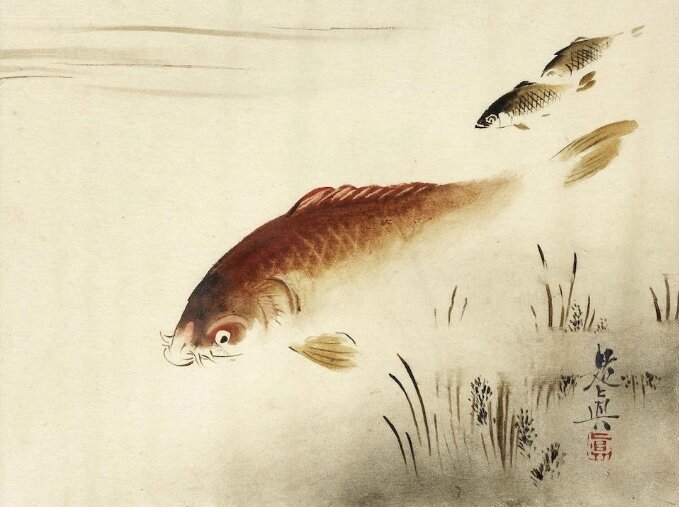
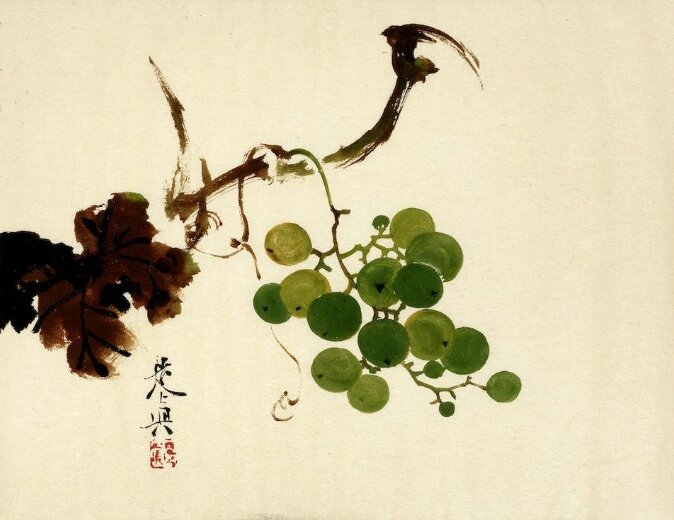


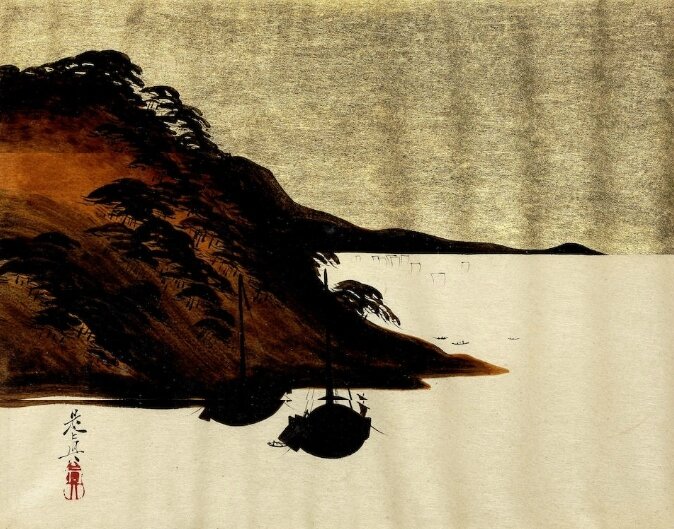








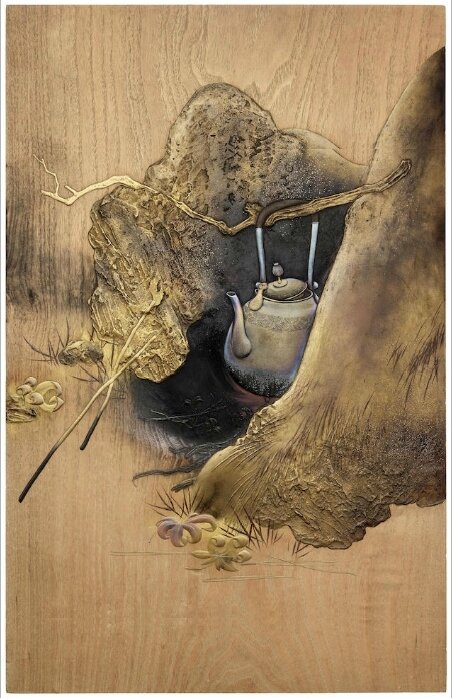







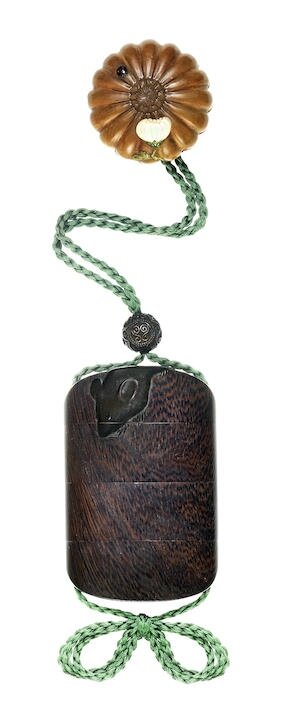















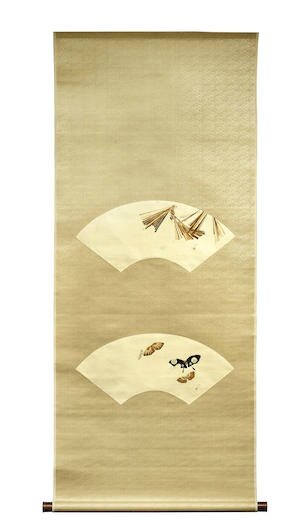










/http%3A%2F%2Fstorage.canalblog.com%2F07%2F84%2F119589%2F93876044_o.jpg)
/http%3A%2F%2Fstorage.canalblog.com%2F42%2F18%2F119589%2F74728797_o.jpg)
/http%3A%2F%2Fstorage.canalblog.com%2F13%2F40%2F119589%2F34798688_o.jpg)
/http%3A%2F%2Fstorage.canalblog.com%2F15%2F72%2F119589%2F31928575_o.jpg)